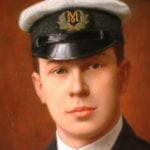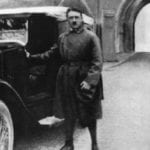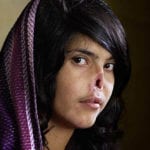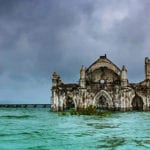 Technology
Technology  Technology
Technology  Humans
Humans 10 Everyday Human Behaviors That Are Actually Survival Instincts
 Animals
Animals 10 Animals That Humiliated and Harmed Historical Leaders
 History
History 10 Most Influential Protests in Modern History
 Creepy
Creepy 10 More Representations of Death from Myth, Legend, and Folktale
 Technology
Technology 10 Scientific Breakthroughs of 2025 That’ll Change Everything
 Our World
Our World 10 Ways Icelandic Culture Makes Other Countries Look Boring
 Misconceptions
Misconceptions 10 Common Misconceptions About the Victorian Era
 Mysteries
Mysteries 10 Strange Unexplained Mysteries of 2025
 Miscellaneous
Miscellaneous 10 of History’s Most Bell-Ringing Finishing Moves
 Technology
Technology Top 10 Everyday Tech Buzzwords That Hide a Darker Past
 Humans
Humans 10 Everyday Human Behaviors That Are Actually Survival Instincts
 Animals
Animals 10 Animals That Humiliated and Harmed Historical Leaders
Who's Behind Listverse?

Jamie Frater
Head Editor
Jamie founded Listverse due to an insatiable desire to share fascinating, obscure, and bizarre facts. He has been a guest speaker on numerous national radio and television stations and is a five time published author.
More About Us History
History 10 Most Influential Protests in Modern History
 Creepy
Creepy 10 More Representations of Death from Myth, Legend, and Folktale
 Technology
Technology 10 Scientific Breakthroughs of 2025 That’ll Change Everything
 Our World
Our World 10 Ways Icelandic Culture Makes Other Countries Look Boring
 Misconceptions
Misconceptions 10 Common Misconceptions About the Victorian Era
 Mysteries
Mysteries 10 Strange Unexplained Mysteries of 2025
 Miscellaneous
Miscellaneous 10 of History’s Most Bell-Ringing Finishing Moves
10 People’s Lives in Famous Photographs
There have been many famous photo lists on Listverse, and many of the photographs contained in this list have been shown before. I thought it would be interesting, and hopefully entertaining, to do a more personalized look at the subjects in some of these well know photographs. The unfamiliar names below will have one thing in common: because of a split second in time with a camera pointing towards, them they will always be remembered as “the person in that photograph” This list includes 10 such individuals, and how a single picture can change some people’s lives. I hope if anyone has any updates on the people in these photographs you will share the information in your comments.
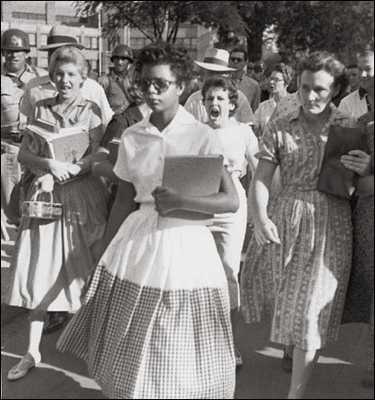
This photo was taken by Will Counts and is considered, by the Associated Press, as one of the top 100 photographs of the 20th century. The photo shows fifteen-year-old Elizabeth Eckford being taunted as she attempts to enter high school. Elizabeth was one of the students, known as the Little Rock Nine, who were initially prevented from entering racially segregated Central High School, in Arkansas. The students were finally allowed to enter, only after President Eisenhower sent U.S. Army troops to accompany the students to school, for their protection. Elizabeth went on to earn a BA in history at Central State University, in Ohio. The student yelling at Elizabeth Eckford, in the center of the photo, is Hazel Bryan Massery, who later apologized to Elizabeth for her actions. Massery was always annoyed by being permanently represented as a racist in the media, just because of a single photo. The two actually became good friends in 1998, after Will Counts took a second photo of them together, symbolizing reconciliation as part of the 40th anniversary of integration at the school. In 2003, one of Elizabeth’s two sons, who suffered from mental illness, was shot and killed after the Little Rock police unsuccessfully tried to disarm him, when he had fired several shots from his military rifle. Many community activists wanted Elizabeth to sue, but she refused, calling it suicide by cop. She now lives in Little Rock and works as a Probation officer.
Interesting Fact: I wish I could say that Elizabeth and Hazel stayed good friends, but that’s not the case. Many felt, including Oprah Winfrey when they appeared on her show in 1999, that Hazel was an opportunist. Elizabeth was thought to be gullible and had been deceived by her. Hazel would take part in various commemorations about the Little Rock Nine, including a visit to the White House with Bill Clinton. One of the Little Rock Nine complained, saying; “We’re the Little Rock Nine, not the Little Rock Ten” Elizabeth would later agree that she was being used, calling Hazel a profiteer and a born-again bigot. In a recent interview, Elizabeth said she doesn’t expect to ever to talk to Hazel again. However, when she was asked if she missed her, she nodded her head and said, “I wish I could tell her how much she helped me, I don’t think I ever told her that.”
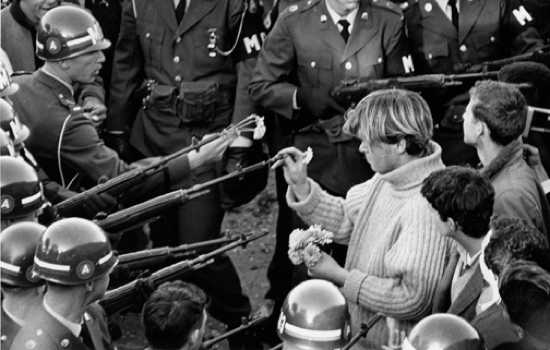
George Harris was a young actor from New York, and was about 18 years old when this famous picture was taken. During a 1967 march protesting the Viet Nam war at the Pentagon, protesters were quickly surrounded by Federal troops. They formed a semi circle, with their guns pointed at the demonstrators. It was then that Harris put flowers in the barrels of the soldiers’ guns to try to defuse the situation. Photographer Bernie Boston snapped the picture, which has become a celebrated image of the 1960s antiwar movement. Later in life, Harris took the name Hibiscus, and co-founded a flamboyant, psychedelic gay-themed drag troupe called the Cockettes. Other members of the Cockettes were the disco diva darling, Sylvester, and controversial B movies actor, Divine. George Harris was an early AIDS casualty, and died in 1982. At the time of his death the new illness was still referred to as GRID. (Gay-related immune deficiency)
Interesting Fact: The Cockettes were the subject of a 2002 documentary. The film debuted at the 2002 Sundance Film Festival, and went on to a limited theatrical release. The film received the LA Film Critics Award as Best Non-Fiction Film of 2002, and the Glitter Award for Best Documentary of 2003.
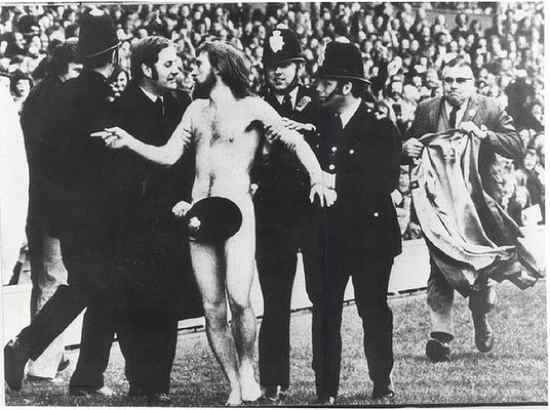
The first streaker at a major sporting event, also produced the most famous streaking photo ever. This photograph, taken by Ian Bradshaw, was Life magazine’s “Picture of the Year” and also won the World Press Photo Award. People Magazine named it, “Picture of The Decade” The photo was taken during a rugby match between England and France, at Twickenham in February, 1974. During half-time, Michael O’Brien, to win a bet, ran naked on the field before a crowd of 48,000, including Princess Alexandra. The next day he lost his job and was also fined £10, which is the exact sum he won in his bet. O’Brian is now a respectable Melbourne Businessman, and was never proud of his stunt. After avoiding the press for 32 years, he finally agreed to do an interview in 2006, with an Australian TV show called “Where Are They Now?” O’Brien said he thinks streaking at sporting events is a stupid thing to do, and regrets starting the worldwide trend. O’ Brian also said that there were no TV cameras at the games in those days, and no one but the 48,000 people in the park would have ever known about it if it wasn’t for Bradshaw’s photo.
Interesting Fact: Constable Bruce Perry (The bobby holding his helmet to cover O’Brien’s naughty bits) was also on the TV show, and presented O’Brian his famous helmet as a gift. Perry said “I feared he would be mobbed, or that other people would follow suit. I felt embarrassed so I covered him up as best I could.” He then added “It was a cold day – he had nothing to be proud of”.
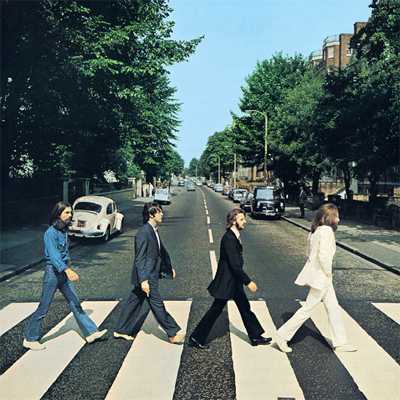
Some might wonder why a staged photo like this, with only famous people in it, is in a list like this. If you look really closely at one of the most well-known album covers in history, you will see a not so famous Paul Cole standing between Ringo and John. Cole was a retired salesman from Deerfield Beach, Florida, and was on a London vacation with his wife. When the picture was taken, Cole was just standing around talking to a policeman in the black police van. In an interview Cole said, “I just happened to look up, and I saw those guys walking across the street like a line of ducks,” a bunch of kooks, I called them, because they were rather radical-looking at that time. You didn’t walk around in London barefoot.” It wasn’t until about a year later that Cole saw himself in the photo. His wife was learning to play George Harrison’s love song “Something” on the organ, and did a double take when she noticed the Abbey Road album on top of the family record player. Cole went on to say, “I had a new sport coat on, and I had just gotten new shell-rimmed glasses before I left. I had to convince my kids that that was me for a while. I told them, ‘get the magnifying glass out kids, and you’ll see it’s me.’” Paul Cole died in 2008, at the age of 96.
Interesting Fact: Photographer Iain McMillan was given only 10 minutes to get the shot for the now famous album cover. He stood on a stepladder in the middle of the street while a policeman held up traffic. He tried to get the Volkswagen beetle moved away from the shot, but couldn’t. He took six shots of the Beatles crossing the street. After seeing the negatives under a magnifying glass, Paul chose the 5th one and the rest is history.
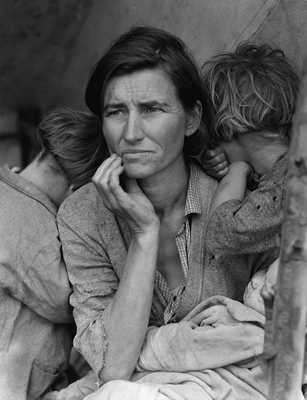
Photojournalist Dorothea Lange captured this image while visiting a California pea-pickers’ camp in February, 1936. Thompson was a mother of seven, who’d lost her husband to tuberculosis. Her family sustained themselves on birds killed by her kids, and vegetables taken from a nearby field. The photo became known as “Migrant Mother” and is one of the most famous photos representing the Depression Era. After the picture and article ran in newspapers, it brought attention to the 3,000 migrant workers who were starving in Nipomo, California. Within days, the camp received 20,000 pounds of food from the federal government. By the time the food arrived, Thompson and her family had moved to another location. Thompson’s identity was not known until 40 years later, when she was located at her mobile home in Modesto, California, after someone recognized her from the famous photograph. In a newspaper interview, Thompson said “I wish she hadn’t taken my picture. I can’t get a penny out of it. She didn’t ask my name. She said she wouldn’t sell the pictures. She said she’d send me a copy. She never did.” It should be noted that Lange was funded by the federal government when she took the picture, so the image was in the public domain. Lange never directly received any royalties, but she did make celebrity status as a photojournalist. On September 16, 1983,Thompson died of cancer and heart problems, at the age of 80.
Interesting Fact: During a 2008 interview, Thompson’s daughter Katherine (to the left of the frame) said that the photo’s fame made the family feel shame at their poverty, but also determined never to be as poor again. Her son Troy, after receiving more than 2000 letters, along with donations for his mother’s medical fund, led to his reassessment of the photo: “For Mama and us, the photo had always been a bit of curse. After all those letters came in, I think it gave us a sense of pride.” Florence Owens Thompson’s epitaph reads “Migrant Mother–A Legend of the Strength of American Motherhood.
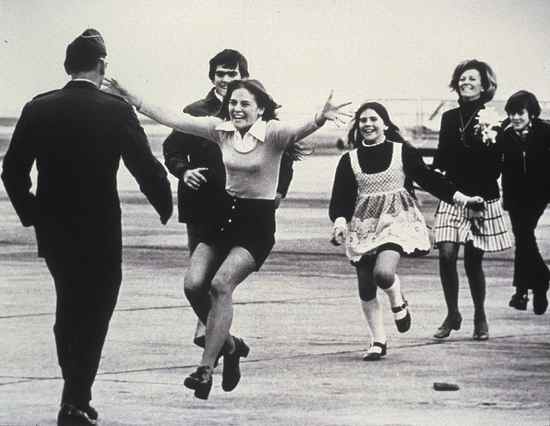
Lt. Colonel Robert L. Stirm was one of the 591 American prisoners of war who were returned during Operation Homecoming, in 1973. This famous Pulitzer Prize-winning shot was taken by Sal Veder, and is known as “Burst of Joy”. It came to symbolize the end of the United States involvement in the Vietnam. The photo shows Stirm’s teen-aged daughter sprinting toward him with her arms out, followed by his other children and his wife. Despite the photos happy appearance, it was just three days before the picture was taken that an Air Force chaplain handed the Lt. Colonel a letter from his wife of 18 years, stating that she had fallen in love with another man during his five-and-a-half years in imprisonment. The next year, the Stirms divorced and his wife remarried. The judge awarded his wife custody of 2 of his younger children, plus the Stirms’ $24,000 suburban home and their car. Stirm was also to pay $300 a month child support. He was also ordered to pay over 40% of whatever pension he would eventually receive. The court denied his wife a share of his POW allotment and refused any alimony claim. However, it ruled nothing could be done about the $136,000 she’d already received.
Interesting Fact: All of the family members depicted in this picture received copies of the photo after it was announced as the winner of the Pulitzer Prize. His children are now grown and have families of their own, and each one has a framed copy of “Burst of Joy” hanging in their homes, except Stirm, who says he cannot bear to look at it. Stirm became a colonel and retired from the Air Force at age 72.
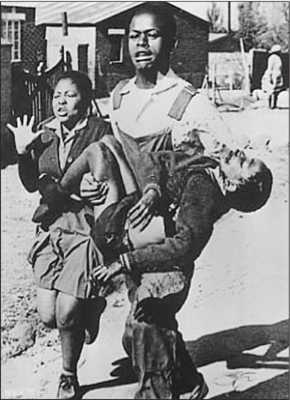
Antoinette Sithole is the sister of Hector Pieterson, who was killed at the age of 13 during the Soweto uprising, when police opened fire on protesting students. The photo was taken by Sam Nzima and shows Antoinette running next to her dying brother, carried by 18 year old South African student, Mbuyisa Makhubo. When the photo was published around the world, it came to represent the anger and tragedy of a day that would change the course of South African history. During the protest, South African police shot and killed 176 black students. Today, Antoinette is an educational speaker and curator at the Hector Pieterson Museum, dedicated to her brother. Every day she relates what happened to her and to her brother. The famous photograph is the centerpiece of the Museum. Antoinette does not know what happened to Mbuyisa Makhubo (who carried her brother), she said he was accused by the police of posing for the photograph, and ended up in exile in Botswana and then moved to Nigeria, where she thinks he became very ill with malaria.
Interesting Fact: In 2006, Senator Barack Obama visited Hector Pieterson Museum in Soweto. Antoinette led the Senator on the tour, during which the Senator remarked that the Soweto uprisings inspired him to get involved in politics.
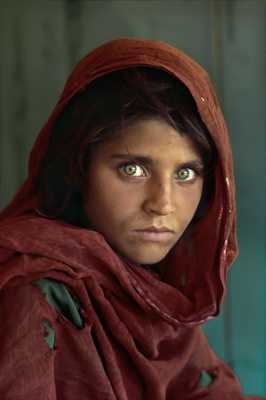
I know most would be expecting this photo to show up on this list. It is the most recognized photograph in the history of National Geographic. Because of this photograph this girl’s story seems amazing, but it’s probably not that unusual during that time. After a Soviet strike that killed Sharbat Gula’s parents, she was forced to hike over the mountains to the Nasir Bagh refugee camp, in neighboring Pakistan, with her siblings and grandmother. It was there that photographer Steve McCurry took the, now famous, photo. Her face became a symbol of the 1980s Afghan conflict, and of the refugee situation worldwide. When the photo first appeared in the magazine, her name was unknown and the photo was just titled “Afghan Girl”. For over 17 years, the Afghan Girl’s name and identity remained a mystery, until McCurry and a National Geographic team traveled to Afghanistan in 2002, to locate her. After many false claims, they finally found her after meeting her brother, who had similar green eyes, in one of the countries remote regions. She was now a woman around 30 years old, and a married mother of three girls. When McCurry was given permission to meet with her again, he told her that her image had become famous. Sharbat was not particularly interested in her personal fame, but she was pleased when he told her she had also come to be a symbol of the dignity and resilience of her people. When her brother was asked what his sister’s life is like, he said this: She rises before sunrise and prays. She fetches water from the stream. She cooks, cleans, does laundry. She cares for her children; they are the center of her life. Robina is 13, Zahida is three, Alia, the baby, is one. A fourth daughter died in infancy. Sharbat has never known a happy day, except perhaps the day of her marriage. Shabat had never seen her famous portrait before it was shown to her, then. She also agreed to have her picture taken for the second time in her life. You can see the picture here.
Interesting Fact: National Geographic set up the Afghan Girls Fund, a charitable organization with the goal of educating Afghan girls and young women. Then, in 2008, the fund was broadened to include boys and the name was changed to Afghan Children’s Fund
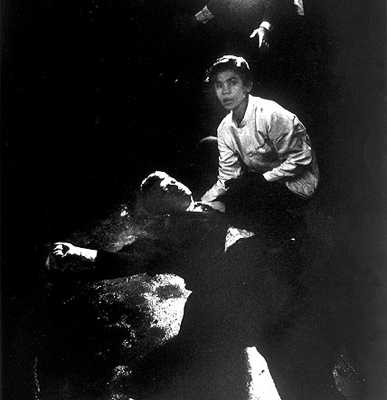
Juan Romero’s family moved to California from Mexico when he was 10 years old. His stepfather pulled him out of the gang world in East LA, and was able to help him get a job at the Ambassador Hotel. Romero was 17 years old, and working as a busboy, when Senator Robert Kennedy was staying at the hotel during his 1968 presidential run. When Kennedy called for room service, Romero paid off another busboy for the privilege of delivering his food. Romero felt honored and appreciated when Kennedy shook his hand in the presidential suite. Just after midnight on June 5th, Kennedy gave his victory speech for winning the California primary. Romero pressed through the crowd to shake the senator’s hand, again. As the two were shaking hands the sounds of gunshots rang out, and Kennedy fell to the floor. Romero knelt down immediately and cradled the senator’s head. Kennedy asked Romero “Is everybody safe, OK?” Romero responded, “Yes, yes, everything is going to be OK. When Kennedy’s wife Ethel appeared, he stood back and pressed his rosary beads into the senator’s hand. Kennedy died 26 hours later from his wounds. Life photographer Bill Eppridge took the iconic photo shown above. For years, Romero had avoided talking about his small part in this national tragedy. He now believes it is his duty to speak up about his own take on Kennedy’s legacy. Romero has lived a good life as a construction worker in San Jose California. He has three daughters, a son and a grandson. He made a promise to Bobby Kennedy that someday he would go to Arlington Cemetery in Virginia, to kneel beside him once again at his grave site. Last year, at age 60, Romero took that trip to Arlington on what would have been Kennedy’s 85th birthday.
Interesting Fact: Romero is still haunted by that day, and even holds himself partly responsible. He thinks if he hadn’t been so intent on shaking Kennedy’s hand he might have seen and stopped the assassin. He said he would have taken the bullet himself if Kennedy could have been spared.
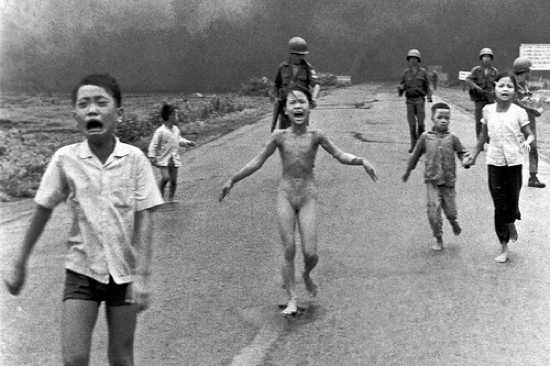
This Pulitzer Prize photograph was taken by Nick Út on June 8, 1972, and became one of the most haunting images of the Vietnam War. The tragic event occurred when a South Vietnamese Air Force pilot mistook a group for enemy soldiers and dropped a napalm bomb on Trang Bang. The image shows nine year old Kim Phúc with her clothes burned off, running amid the chaos. The bombing killed two of Kim’s cousins and two other villagers. After taking the photograph, Nick Út took Kim and the other injured children to Barsky Hospital, in Saigon. Her burns were so severe that she almost did not survive. After a 14-month hospital stay, and 17 surgical procedures, she was able to return home. When Kim grew up she studied medicine, but was removed from the university and used as a propaganda symbol by the communists. Kim requested, and was eventually granted permission, to move to Cuba to study pharmacy, where she would meet her future husband. During a vacation back from Moscow with her husband in 1992, their plane stopped over in Newfoundland, Canada. As it was re-fuelling they walked off the plane and defected to the Canadian government. The two now live in Ajax, Ontario, Canada, and have two children.
Interesting Fact: In 1997, Kim established the Kim Phuc Foundation, in the US, with the aim of providing medical and psychological assistance to child victims of war. Other foundations were set up later, and called the Kim Phuc Foundation International. Kim also tours the world giving speeches at churches and schools, talking about her story.

I have included this guy as bonus because, as we all know, it’s a manipulated photograph. This is one of the most famous pictures to circulate on the Internet. It surfaced on line after the 9/11 attacks, and was reportedly taken of a tourist just moments before a plane hit the World Trade Center. The photo was claimed to be found later in a camera along with the other debris. Despite all of the technical flaws in the fake photo, many actually believed it was the real thing. The man in the photo is Péter Guzli and he was also the one responsible for the manipulation. The 25 year old Hungarian man edited the image from a photo that was taken of him during a 1997 trip to New York. He found the picture of the American Airlines Boeing 757 on airliners.net. He then added a 09-11-01 date stamp and e-mailed the image to a few friends, but had no idea that it would spread so quickly across the Internet. Guzli didn’t want any publicity and didn’t want his identity known. He said it was a joke meant for just his friends, and it was not for a worldwide audience. He probably would have kept his identity a secret, but when 41-year-old businessman Roberto Penteado from Brazil claimed it was him and was trying to capitalize on the photo, Guzli stepped forward and showed the original photos to prove it. Penteado then withdrew his claim, and slipped quietly back into anonymity.
Interesting Fact: Guzli’s fame spread when Internet humor took over and other people started to use his image for other tourist photos. Now known by many as the “tourist guy”, other pictures show him during the sinking of the Titanic, at John F. Kennedy’s assassination, at the Yalta conference and attending a Ku Klux Klan rally, just to name a few.
